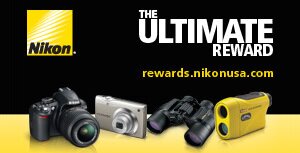The Ball's in Your Court
Author: Mary Ann Masarech
By Mary Ann Masarech, Employee Engagement Practice Leader, BlessingWhite
The question I keep getting is "What can we do as a company to boost employee engagement?"
Arguably, organizations can never make employees engaged. What they can do is create the environment, inject purpose and meaning into the work and provide the clarity required for employees to become more engaged. Engagement needs to be less about organizational action planning and more about the daily behaviors of executives, managers and individuals. Every member of the workforce has a specific role to play.
Sure, as a leader you need to build the right culture and coach individuals to reach higher levels of engagement. But you also have to take responsibility for your own engagement. We’ve said it before: One dead battery cannot jump-start another.
You may have spent the end of last year working on your 2011 strategic plans. It’s now time to create a personal engagement plan.
Determining Your Starting Point
How engaged are you? If you’re a vice president or above in North America, you are more likely to be engaged than everyone else you work with. Before you congratulate yourself and move on to the next newsletter in your mailbox, consider this: Only 1 in 2 execs are fully engaged. Which half do you fall in?
You may know the engagement levels of your most remote regional office or the first-level supervisors in Customer Service. You may have discussed your department’s engagement levels with your team. But where are you? Are you at maximum satisfaction and contribution (Engaged)? Producing stellar results but unhappy (Crash & Burner)? Loving your job but uncertain that you’re delivering the results really needed (Honeymooner or Hamster)? Totally disconnected and barely getting by (Disengaged)? Satisfied and contributing most of the time (Almost Engaged)?
Taking Stock
Naturally, you need to prep before you can plan. Here’s what to ask:
What drives you? If you don’t know what’s important to you, you won’t find it on the job. And what’s important to you is reflected in your values. Personal values are the fuel for exceptional achievements, they’re the filter through which you define career success and can help determine job fit. Jobs are neutral. Your values determine how you feel about them. So you need to first list the values that you hold most dear and then consider how well they are satisfied at work. Note the conditions of your job that you like, which you want to maintain. Note also those things that, if changed, would have a positive impact on your engagement.
Why do you stay? Don’t fall into a common leadership trap: Getting so involved in the day-to-day tactics and challenges of your work that you forget why you chose your profession or why you joined your organization in the first place. Our research indicates that most people want meaningful work, new challenges, career growth and a sense of community. Few are searching for money or promotions alone. Even fewer are looking for "just a job." So take a minute or two to reflect: Why do you do what you do?
Where are you focused? You can’t be engaged if you’re not making a difference for your organization. To do that, you must have laser-like attention to what matters most. Do you need more clarity? What additional information do you want? Do you and your manager see things the same way? Don’t assume you do. Most people have at least a few disconnects with their managers on what’s important, and some are way off course.
What are you bringing to the table? Focus isn’t enough. Are you applying your unique expertise and expanding your knowledge and skills? Research over the last decade reinforces what our founders, Buck Blessing and Tod White, said in the 70s: Building on strengths is the best way to become a star and thrive at work.
Action Planning
Now what?
- Identify what you will do to clarify your aspirations and act in alignment with your stated values. What can you stop, start, or continue? No one else can do this for you. (If you’re grumbling about work/life balance, I guarantee there are things you can do. It’s not just the job’s fault.)
- Brainstorm ideas for reshaping your job conditions to support your best work.
- Start or revise your development plan to build on talents that give you satisfaction and drive the organization’s agenda. Don’t dwell on fixing a weakness unless it looks like it could become a fatal flaw.
- Talk to your boss. There’s a double standard in leadership: It’s your job to coach your people to higher levels of engagement but you, at your level, should be able to manage your engagement on your own. Forget it. Without a conversation, your manager may inadvertently take action on your behalf that will have a negative impact on your engagement. Explain what role you need him or her to play in providing information and supporting you and your team. And don’t forget to mention the things you need your manager to stop doing.
Staying on Course
Engagement levels are dynamic. The slide from full engagement into crashing and burning or “hamstering” can be imperceptible, so take your own pulse often. Go public with your plan of action – especially with those things that you have complete control over.
Keep your line of sight on work that works for you and your organization.
Mary Ann Masarech manages her engagement as a telecommuter to BlessingWhite’s Princeton, NJ, headquarters. Contact her at . BlessingWhite’s most recent global study of employee engagement can be downloaded at www.blessingwhite.com/EEE__report.asp
Subscription Center
Subscribe to Engagement Strategies Magazine
Update Your Subscriptions



.jpg)


Comments
Show: Newest | Oldest
Post a Comment